Thornbury, Gloucestershire
Up to 1834
A parliamentary report of 1777 recorded parish workhouses in operation in Thornbury (for up to 80 inmates), Elberton (20), and Littleton (20).
In Olveston, a house on Foxholes Lane was used as the parish workhouse from about 1814.
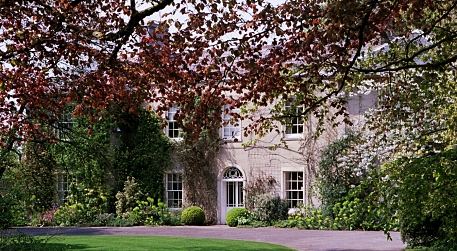
Olveston entrance block from the south-west, 2004.
© Peter Higginbotham.
Almondsbury had a poorhouse or workhouse on The Scop. The building is now divided into residential properties and known as Belgrave Buildings.

The former Almondsbury workhouse, 2020.
© Peter Higginbotham.
After 1834
Thornbury Poor Law Union was officially formed on 5th April 1836. Its operation was overseen by an elected Board of Guardians, 26 in number, representing its 21 constituent parishes as listed below (figures in brackets indicate numbers of Guardians if more than one):
County of Gloucester:
Almondsbury (2), Alveston, Aust Chapelry, Charfield, Cromhall Abbots and Cromhall Lygon, Elberton, Hill, Littleton-upon-Severn, Northwick with Redwick Chapelry, Olveston (2), Rockhampton, Rungeworthy, Thornbury (3), Tortworth, Tytherington.
Parish of Berkeley:
Alkington, Berkeley, Breadstow, Ham and Stone, Hamfallow, Hinton.
The population falling within the Union at the 1831 census had been 15,422 with parishes ranging in size from Breadstone (population 121) to Thornbury itself (4,044). The average annual poor-rate expenditure for the period 1833-35 had been £6,641 or 6s.7d. per head.
A new workhouse for the Thornbury Union was built in 1837, to designs by Sampson Kempthorne. Intended to accommodate up to 250 inmates, the Poor Law Commissioners authorized the sum of £5,040 on its construction. Its layout followed Kempthorne's "200-pauper" plan as shown on the 1901 map below.
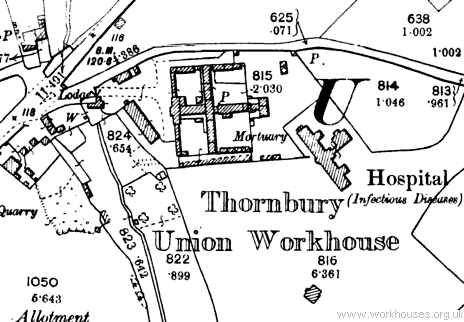
Thornbury site, 1901
An entrance block at the west contained the porter's lodge and Guardians' board-room, with children's dormitories above. The standard plan had a single-storey bakehouse to one side of the entrance block, and stores to the other.

Thornbury entrance block from the south-west, 2001.
© Peter Higginbotham.
To the rear, a children's dining-hall cum school-room separated the boys' and girls' yards. The main range contained women's accommodation to one side and men's to the other, with the kitchen and master's quarters at the centre.

Thornbury workhouse from the south, 2001.
© Peter Higginbotham.
A further wing to the east probably contained the adult's dining-hall/chapel. The small cross-wing at the east may have housed the original infirmary.
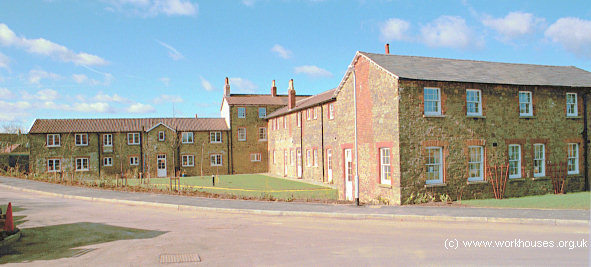
Thornbury east wing and original infirmary, 2001
© Peter Higginbotham.
At the workhouse entrance, to the north-west of the entrance block, a new porter's lodge was erected in 1888.
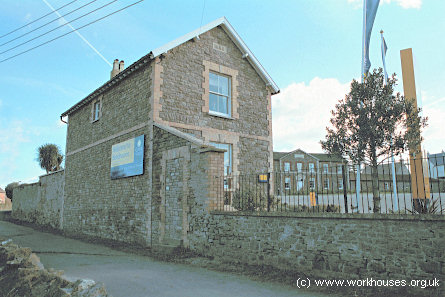
Thornbury porter's lodge from the west, 2001.
© Peter Higginbotham.
In 1899, a new infirmary was built to the south-east of the workhouse. This long, two-storey building. At its centre were the surgery, nurses' rooms etc. with wards to each side.
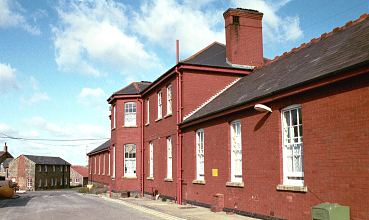
Thornbury infirmary from the south, 2001.
© Peter Higginbotham.
In the 1930s, the workhouse came under the control of the local council. It became known as Thornbury Hospital and continued in use until the 1990s. In 2000-2001, the buildings were redeveloped as residential accommodation.
Staff
Inmates
Records
Note: many repositories impose a closure period of up to 100 years for records identifying individuals. Before travelling a long distance, always check that the records you want to consult will be available.
- Gloucestershire Archives, Clarence Row, Alvin Street, Gloucester GL1 3DW. Modest holdings include Guardians' minute books (1836-1935, with gaps); Letter books (1846-72); etc.
Bibliography
- Higginbotham, Peter The Workhouse Encyclopedia (2014, The History Press)
Links
- None.
Unless otherwise indicated, this page () is copyright Peter Higginbotham. Contents may not be reproduced without permission.


